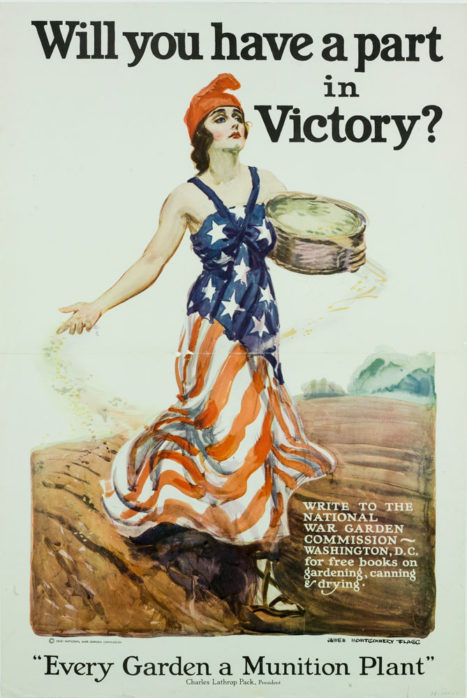
Denverites honored supply line workers as well as military units in a postwar Labor Day parade on September 3, 1945. Photos courtesy of History Colorado Center
As we confront uncertainty, fear, and even death in the coronavirus pandemic, we know Coloradans experienced similar traumas in World Wars I and II. Then, the community came together to face a common enemy—but also fell prey to xenophobia and racism as they looked for someone to blame. What are we seeing today and is it reminiscent of how Coloradans responded during wartime?
Over 1,000 people in Colorado have died so far from Covid-19. During World War I, almost the same number of Coloradans lost their lives—either in battle or to disease. Nearly 2,700 Coloradans died in World War II. But death is just one aspect of trauma induced by war and disease. Fears for our own health and safety and that of our loved ones, along with limitations on movement and commercial activity also create anxiety. In times of stress, we look for someone to blame—and one unfortunate trend across all three time periods is a rise in xenophobia and racism.

In 1918, the federal government commissioned an artist to design this poster to promote Victory Gardens during WWI.
When the United States entered World War I in 1917, anti-German sentiment flourished. Schools in Colorado stopped teaching German, and some symphonies even refused to play works by German composers.1 After the Japanese bombed Pearl Harbor on Dec. 7, 1941, many white Americans began to distrust Americans of Japanese descent. President Roosevelt codified this anti-Japanese sentiment with an Executive Order to forcibly move Japanese Americans to concentration camps, including one at Amache in southeastern Colorado. Colorado Gov. Ralph Carr was one of few voices at the time criticizing the federal government’s treatment of Japanese-American citizens (a position that may have cost him subsequent election to the Senate).
In the current crisis, President Donald Trump has referred to the coronavirus as “The Chinese Virus” despite public health officials’ concerns that attaching a country to the name of a disease engenders racism. Demonstrations over restrictions to curb the infection rate have highlighted existing political divisions, with protestors defying mask recommendations and the ban on group gatherings.
As Colorado enters a “safer-at-home” period, Denver remains under certain restrictions: masks are required in public spaces, gatherings of 10 or more people are banned, and restaurants, bars, and entertainment venues remain closed. The last time Denverites experienced restrictions on movement and commercial activity was during World War II, when gasoline and food supplies were rationed, and the city enacted blackout drills. While many may have found the recent lockdown difficult, it had some silver linings when compared to wartime restrictions. Toilet paper may have been hard to find, but food supply chains have so far been largely uninterrupted. And while we can’t be together in person, we remain connected with friends and family virtually.
Despairing in the face of restrictions designed to keep people safe or blaming others only increases fear at a time when solidarity and kindness are needed. During World Wars I and II Coloradans joined together in many acts of solidarity.
The federal government encouraged citizens to grow their own food—“victory gardens”—enabling the agricultural industry to focus on the military effort during World War I. Coloradans—from Governor Julius C. Gunter to editorialists in local newspapers—rallied support for these gardens. A generation later, during World War II, victory gardens cropped up again, this time in response to food rationing to supply the military. In our recent quarantine, home gardens started blooming again—for some because they had time, but also because grocery shopping had become an ordeal.
During World War I and World War II, Denverites held parades for the men and women serving to keep them safe and people celebrated the official end of the war by yelling and clanging pots and pans. Massive collection drives during World War II gathered supplies for the war. In a July 1941 drive, Denverites contributed twenty tons of aluminum and all kinds of scrap metal—from toothpaste tubes to train tracks and even an old bank vault2. And after the war, the parades continued to honor both the military and those who worked on the home front.
Just as in previous conflicts, this time of crisis has brought us together in collective expressions of solidarity with those fighting to keep us safe. Even the language we use echoes that of war—“frontline” workers and health “heroes” fighting a common “enemy.” The 8pm howl, rainbows and signs in windows, chalk art on sidewalks, social media campaigns like #doingmypartCO and #wegotthisdenver, and murals that honor frontline workers are all expressions of solidarity and our collective experience.
While this pandemic is still unfolding, we don’t yet know how it will transform our culture and our society. We can, however, look to past times of trauma and fear to give us hope and guide us toward positive and productive responses.
____________________
1Derek Everett, Colorado Heritage, Winter 2018-2019
2Stephen Leonard, Colorado Heritage, 1987, Issue 4



0 Comments